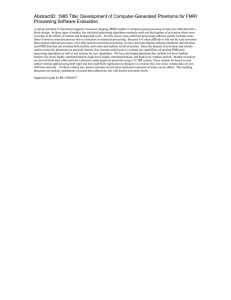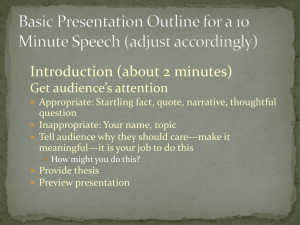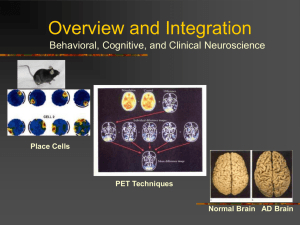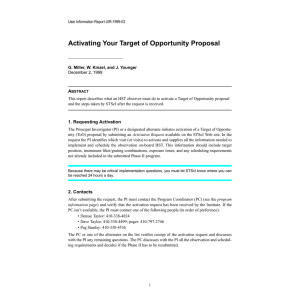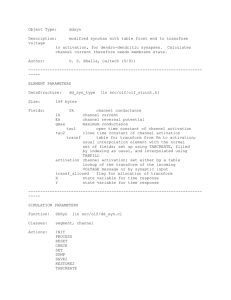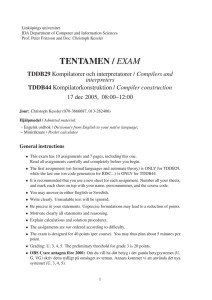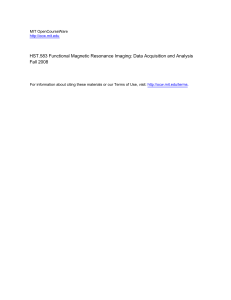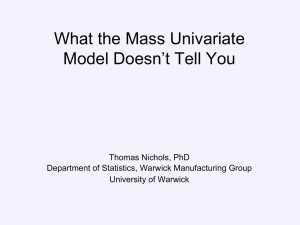Predicting Successful Novel-word — Garamond Bold 96pt , Introduction: K. Leigh Morrow-Odom
advertisement
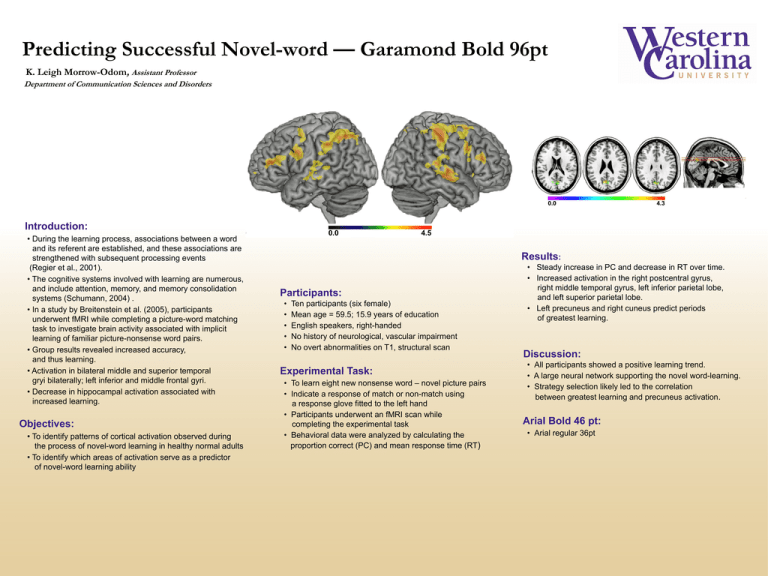
Predicting Successful Novel-word — Garamond Bold 96pt K. Leigh Morrow-Odom, Assistant Professor Department of Communication Sciences and Disorders Introduction: • During the learning process, associations between a word and its referent are established, and these associations are strengthened with subsequent processing events (Regier et al., 2001). • The cognitive systems involved with learning are numerous, and include attention, memory, and memory consolidation systems (Schumann, 2004) . • In a study by Breitenstein et al. (2005), participants underwent fMRI while completing a picture-word matching task to investigate brain activity associated with implicit learning of familiar picture-nonsense word pairs. • Group results revealed increased accuracy, and thus learning. • Activation in bilateral middle and superior temporal gryi bilaterally; left inferior and middle frontal gyri. • Decrease in hippocampal activation associated with increased learning. Objectives: • To identify patterns of cortical activation observed during the process of novel-word learning in healthy normal adults • To identify which areas of activation serve as a predictor of novel-word learning ability Results: Participants: • • • • • Ten participants (six female) Mean age = 59.5; 15.9 years of education English speakers, right-handed No history of neurological, vascular impairment No overt abnormalities on T1, structural scan Experimental Task: • To learn eight new nonsense word – novel picture pairs • Indicate a response of match or non-match using a response glove fitted to the left hand • Participants underwent an fMRI scan while completing the experimental task • Behavioral data were analyzed by calculating the proportion correct (PC) and mean response time (RT) • Steady increase in PC and decrease in RT over time. • Increased activation in the right postcentral gyrus, right middle temporal gyrus, left inferior parietal lobe, and left superior parietal lobe. • Left precuneus and right cuneus predict periods of greatest learning. Discussion: • All participants showed a positive learning trend. • A large neural network supporting the novel word-learning. • Strategy selection likely led to the correlation between greatest learning and precuneus activation. Arial Bold 46 pt: • Arial regular 36pt

